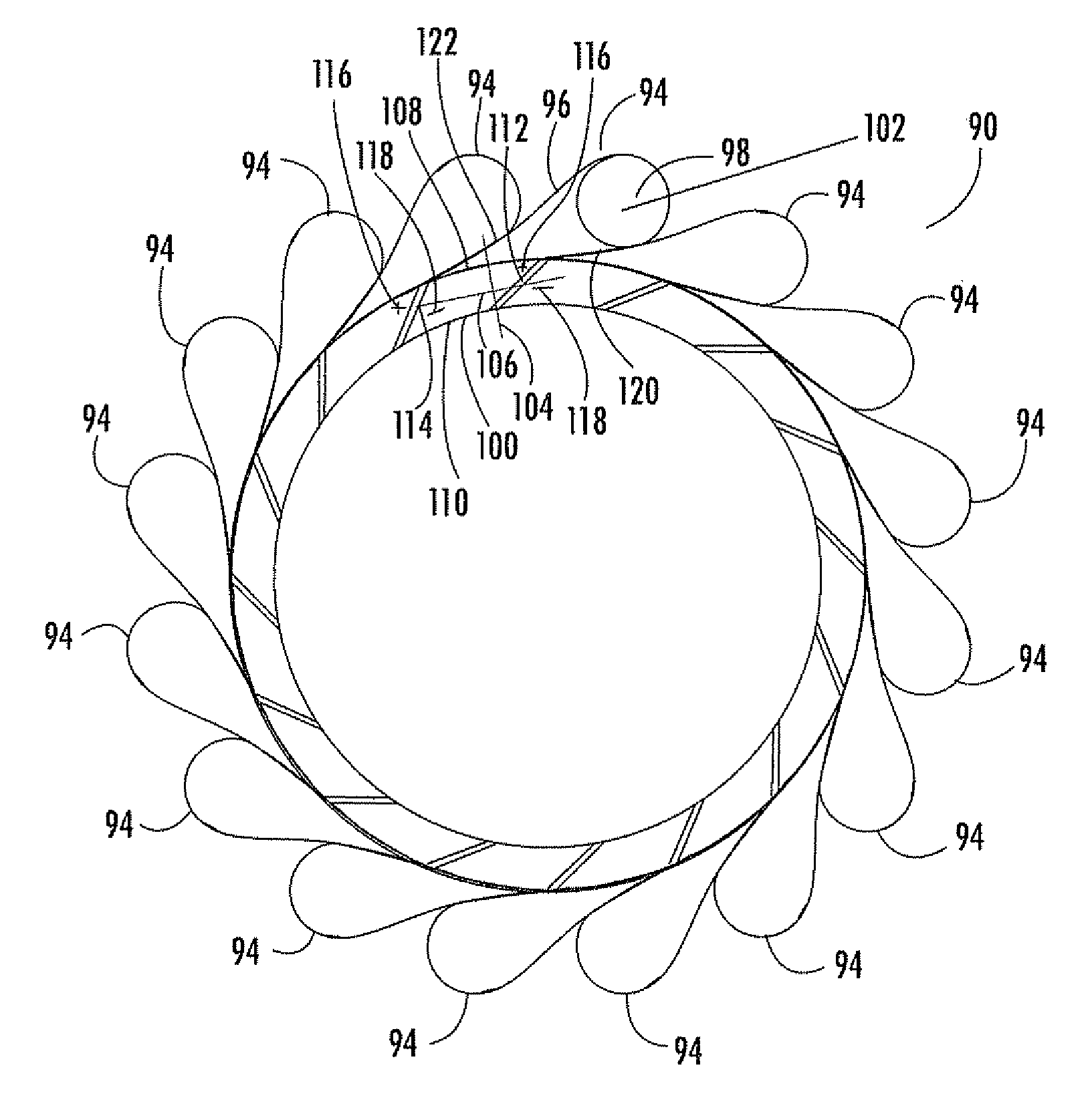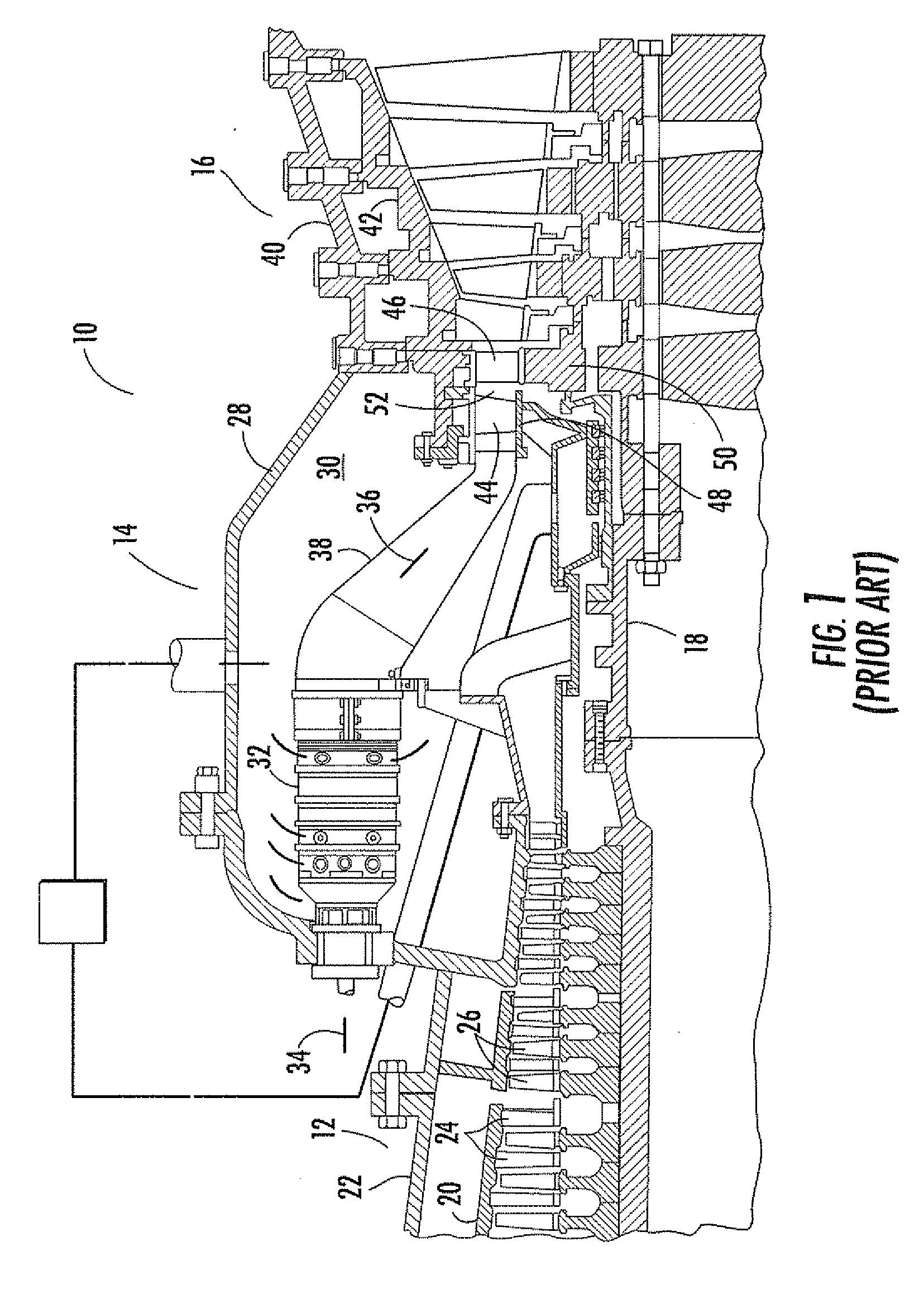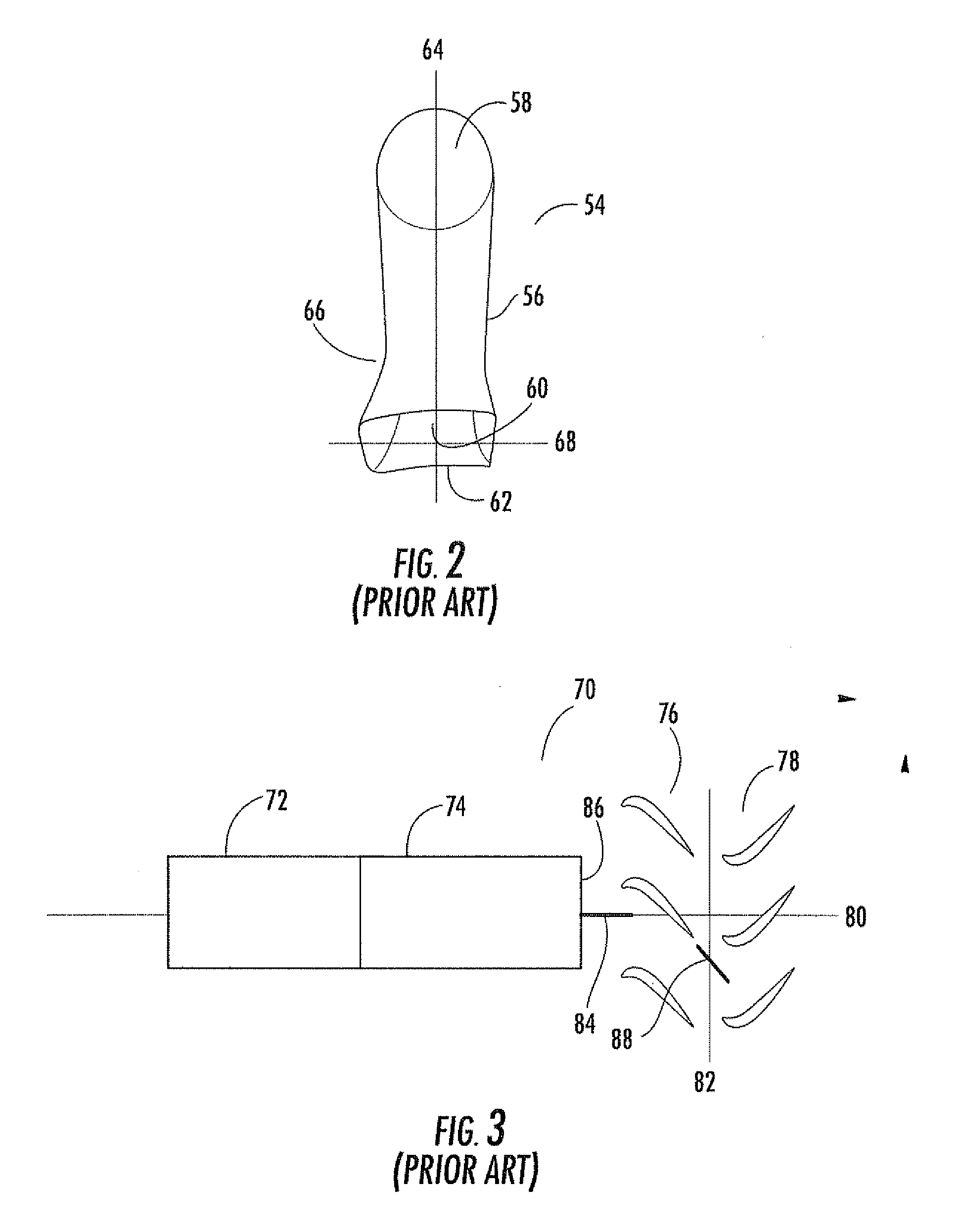Transition with a linear flow path with exhaust mouths for use in a gas turbine engine
a gas turbine engine and linear flow technology, applied in the direction of machines/engines, liquid fuel engines, lighting and heating apparatus, etc., can solve the problems of reducing material properties, affecting the performance of the engine, so as to reduce the structural load on the mount, reduce excitation and stress, and eliminate damaging stresses
- Summary
- Abstract
- Description
- Claims
- Application Information
AI Technical Summary
Benefits of technology
Problems solved by technology
Method used
Image
Examples
Embodiment Construction
[0052]As shown in FIG. 4-12, this invention is directed to a transition duct 94 for routing gas flow from a combustor to a turbine section of a turbine engine. The transition duct 94 may be have an axis 130 that is generally linear. In such a configuration, the transition duct 94 channels gases from a combustor basket to a downstream turbine blade assembly and accomplishes the task of directing the gases, which has normally been accomplished with row one vanes. Thus, the transition duct 94 eliminates the need for row one vanes. The transition duct 94 may also be configured to include an outlet 100 with side surfaces 112, 114 that is configured to reduce downstream wake thereby resulting in reduced vibration in downstream turbine vanes. As such, the outlet 100 reduces inefficiencies caused by the combustor gases exiting the transition duct 94.
[0053]As shown in FIGS. 4, 5 and 7, the transition ducts 94 may be positioned in an annular array 90, as shown without surrounding turbine comp...
PUM
 Login to View More
Login to View More Abstract
Description
Claims
Application Information
 Login to View More
Login to View More - R&D
- Intellectual Property
- Life Sciences
- Materials
- Tech Scout
- Unparalleled Data Quality
- Higher Quality Content
- 60% Fewer Hallucinations
Browse by: Latest US Patents, China's latest patents, Technical Efficacy Thesaurus, Application Domain, Technology Topic, Popular Technical Reports.
© 2025 PatSnap. All rights reserved.Legal|Privacy policy|Modern Slavery Act Transparency Statement|Sitemap|About US| Contact US: help@patsnap.com



